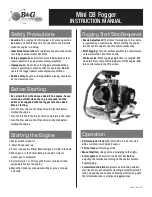
4-5
4.4 Transducer
Check
A simple and reliable check of the transducer is to temporarily replace the transducer with a new
one. If the sensitivity is considerably improved through this change, the transducer is probably
faulty. This method is especially useful for inside-hull or through-hull installation.
Another method is to listen to the transmission sound. Haul the transducer from the water and
turn on the power. Put your ear near the transducer face and carefully listen to the transmission
sound. If you can hear a clicking sound, the transducer is probably normal. Next, rub the
transducer face with your hand and observe whether noise appears on the screen. The
appearance of noise indicates the transducer is normal. In case of neither sound nor noise, the
transducer is probably faulty.
4.5
Speed/Water Temperature Sensor (option)
Check
The idea of the transducer check can apply to this case, too; temporarily substitute a new
sensor. If the speed/temperature indications become normal, your sensor may be faulty.
When a new sensor is not available, try to turn the water wheel with a finger. If the sensor is
normal, the speed indication will be two to three knots when the wheel is turned slowly and
seven to eight knots when turned more quickly. As for the water temperature, the water
temperature indication should change when you touch the thermosensor.
4.6
Restoring Default Settings
1. Turn on the unit while pressing any key. The following display appears.
*** OPTION MODE ***
[
−
]
: SELF TEST
[
] : SET DATA TO DEFAULT
[
] : DEMONSTRATION
PLEASE HIT ANY KEY.
PROG-NO. 025-2179-0**
** Program version No.
2. Press
[
▲
] to restore default settings. The message SET DATA TO DEFAULT! appears. After
default settings are restored, the message is erased and the normal display appears. See
the next page for default settings.





































